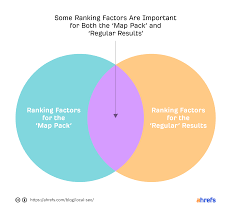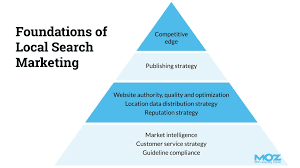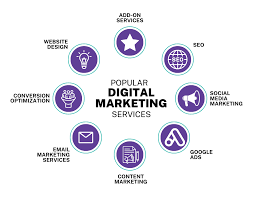SEO: Unlocking the Power of Search Engine Optimization
In today’s digital age, where online visibility is crucial for businesses and individuals alike, search engine optimization (SEO) has become a vital tool. SEO is the process of optimizing a website to improve its visibility and ranking on search engine results pages (SERPs). It involves various techniques and strategies that help search engines understand the content and relevance of a website, ultimately driving organic traffic and boosting online presence.
The significance of SEO cannot be overstated. With millions of websites competing for attention on search engines like Google, Bing, and Yahoo, having a solid SEO strategy can make all the difference in attracting potential customers or readers. Here’s why SEO matters:
Increased Visibility: When someone searches for specific keywords related to your website or business, you want to appear on the first page of search results. Studies show that users rarely venture beyond the first page, so ranking higher increases your visibility and chances of getting clicks.
Targeted Traffic: SEO allows you to target specific keywords or phrases relevant to your business or industry. By optimizing your website’s content with these keywords, you attract users who are actively searching for what you offer, increasing the likelihood of converting them into customers or readers.
Credibility and Trust: Appearing on top of SERPs instills confidence in users that your website is trustworthy and authoritative. Users often associate higher rankings with credibility, leading to increased click-through rates and better user engagement.
Cost-Effective Marketing: Compared to traditional advertising methods like print media or TV commercials, SEO provides a cost-effective way to promote your business online. While it requires time and effort initially, the long-term benefits can far outweigh the investment.
Now that we understand why SEO is essential let’s explore some key strategies:
Keyword Research: Identify relevant keywords that align with your business goals using keyword research tools like Google Keyword Planner or SEMrush. Focus on long-tail keywords (more specific phrases) that have lower competition but higher conversion potential.
On-Page Optimization: Optimize your website’s content, including meta tags, headings, and URLs, with targeted keywords. Ensure your content is informative, engaging, and valuable to users while incorporating relevant keywords naturally.
Technical SEO: Improve your website’s technical aspects, such as site speed, mobile-friendliness, and crawlability. Search engines prioritize websites that offer a seamless user experience across different devices.
Link Building: Earn high-quality backlinks from reputable websites in your industry. Backlinks act as votes of confidence for search engines and can significantly impact your website’s authority and rankings.
Content Marketing: Create high-quality, informative content that resonates with your target audience. Engaging blog posts, articles, videos, or infographics can attract organic traffic and encourage social sharing.
Remember that SEO is an ongoing process that requires continuous monitoring and adaptation to changing search engine algorithms. It’s essential to stay up-to-date with the latest trends and best practices in order to maintain a competitive edge.
In conclusion, SEO is a powerful tool that can elevate your online presence and drive organic traffic to your website. By implementing effective SEO strategies tailored to your business goals, you can unlock the potential of search engine optimization and reap the rewards of increased visibility, credibility, and targeted traffic.
5 Common Questions About SEO: Answered
- How can I do SEO for my website?
- Can I do SEO on my own?
- What is SEO and how it works?
- What does search engine optimization SEO do?
- What is SEO and optimization?
How can I do SEO for my website?
Implementing SEO for your website can be a multi-step process. Here are some key steps to get you started:
- Keyword Research: Identify relevant keywords and phrases that your target audience is likely to search for. Use keyword research tools like Google Keyword Planner, SEMrush, or Moz’s Keyword Explorer to find popular and low-competition keywords.
- On-Page Optimization: Optimize your website’s pages by incorporating the identified keywords strategically. Include them in page titles, meta descriptions, headings, and throughout the content. Ensure that the content remains natural and user-friendly.
- Technical SEO: Improve your website’s technical aspects to enhance its performance and crawlability by search engines. This includes optimizing site speed, making it mobile-friendly, using clean URLs, creating an XML sitemap, and improving site navigation.
- High-Quality Content: Create informative and engaging content that provides value to your audience. Develop a content strategy that aligns with your target keywords and addresses the needs of your users. Regularly update and add fresh content to keep visitors engaged.
- Link Building: Earn high-quality backlinks from reputable websites in your industry. Seek opportunities for guest blogging or collaborate with influencers who can link back to your site. Focus on building natural links rather than resorting to black-hat tactics.
- User Experience: Enhance the overall user experience of your website by ensuring it is easy to navigate, visually appealing, and loads quickly across devices (desktops, tablets, smartphones). User-friendly websites tend to rank higher in search results.
- Local SEO (if applicable): If you have a physical location or serve specific regions, optimize for local searches by including location-specific keywords in your content and optimizing Google My Business listing.
- Analytics & Monitoring: Set up tools like Google Analytics or other SEO software to track website performance, traffic sources, keyword rankings, and user behavior on-site regularly. Analyze the data to identify areas for improvement and adjust your SEO strategy accordingly.
- Stay Up-to-Date: SEO algorithms and best practices evolve over time. Stay informed about industry updates, algorithm changes, and new trends through reputable sources. Continuously adapt your SEO strategy to align with the latest recommendations.
Remember that SEO is a long-term process, and results may not be immediate. Consistency, patience, and continuous optimization are key to achieving sustainable improvements in your website’s visibility and organic traffic. Consider seeking professional assistance or consulting with an SEO expert if you need additional guidance or have specific requirements for your website.
Can I do SEO on my own?
Yes, you can absolutely do SEO on your own. While it may seem complex at first, with the right resources and guidance, you can learn and implement effective SEO strategies for your website. Here are some steps to get started:
- Educate Yourself: Familiarize yourself with the basics of SEO by reading reputable online resources, blogs, and guides. There are numerous free online courses and tutorials available that can provide a solid foundation.
- Keyword Research: Conduct keyword research to identify relevant keywords for your website. Use keyword research tools like Google Keyword Planner, SEMrush, or Moz’s Keyword Explorer to find keywords with high search volume and low competition.
- On-Page Optimization: Optimize your website’s content by incorporating targeted keywords naturally into page titles, meta descriptions, headings, and URLs. Ensure that your content is valuable and informative to users while being optimized for search engines.
- Technical SEO: Improve the technical aspects of your website to enhance its performance and user experience. Focus on areas such as site speed optimization, mobile-friendliness, SSL certificate installation, XML sitemap creation, and robots.txt file optimization.
- Link Building: Earn high-quality backlinks from reputable websites in your industry. This can be achieved through guest blogging, creating shareable content that attracts natural links, or reaching out to other website owners for collaboration opportunities.
- Content Creation: Develop high-quality content that is relevant to your target audience’s interests and needs. Regularly publish blog posts, articles, videos, or infographics that provide value and engage users.
- Monitor Performance: Utilize free tools like Google Analytics and Google Search Console to monitor the performance of your website in terms of organic traffic, keyword rankings, click-through rates (CTRs), bounce rates, and conversions.
- Stay Updated: SEO is an ever-evolving field due to changes in search engine algorithms. Stay informed about the latest trends and best practices by following reputable industry blogs, attending webinars, and joining SEO communities.
While doing SEO on your own is possible, it’s important to note that it requires time, effort, and continuous learning. If you find it overwhelming or prefer to focus on other aspects of your business, you can also consider hiring an SEO professional or agency to assist you. They can provide expertise and save you time while ensuring effective optimization for your website.
What is SEO and how it works?
SEO, or search engine optimization, is the practice of optimizing a website to improve its visibility and ranking on search engine results pages (SERPs). It involves various techniques and strategies aimed at enhancing a website’s relevance, authority, and user experience to attract organic (non-paid) traffic from search engines like Google, Bing, and Yahoo.
Search engines use complex algorithms to determine the most relevant and authoritative websites for a given search query. SEO works by aligning your website with these algorithms to increase its chances of appearing prominently in search results. Here’s how it works:
- Keyword Research: SEO begins with identifying the keywords or phrases that users are likely to use when searching for information related to your website or business. Through keyword research tools, you can analyze search volume, competition level, and relevance to select the most appropriate keywords.
- On-Page Optimization: Once you have identified relevant keywords, you need to optimize your website’s content accordingly. This involves incorporating them naturally into page titles, headings, meta descriptions, URLs, and throughout the content itself. On-page optimization also includes optimizing images with descriptive alt tags and ensuring proper internal linking within your website.
- Technical SEO: Search engines prefer websites that are technically sound and provide a seamless user experience. Technical SEO involves optimizing various technical aspects of your website such as site speed, mobile-friendliness, URL structure, XML sitemaps creation, robots.txt file optimization, and ensuring proper indexing by search engine crawlers.
- Off-Page Optimization: Off-page optimization focuses on building the authority and credibility of your website through external factors such as backlinks from other reputable websites. The quality and quantity of backlinks play a significant role in determining a website’s authority in the eyes of search engines.
- Content Creation: Creating high-quality content that is valuable to users is crucial for SEO success. By producing informative blog posts, articles, videos, infographics, and other forms of content, you can attract organic traffic, engage users, and encourage them to share your content. Fresh and regularly updated content signals to search engines that your website is active and relevant.
- User Experience: Search engines prioritize websites that provide a positive user experience. This includes factors such as fast loading times, easy navigation, mobile responsiveness, clear site structure, and engaging multimedia elements. Ensuring a user-friendly experience encourages visitors to stay longer on your site and increases the chances of conversion.
- Monitoring and Analysis: SEO is an ongoing process that requires constant monitoring and analysis of website performance. By using tools like Google Analytics or other SEO software, you can track key metrics such as organic traffic, bounce rate, keyword rankings, and user behavior. This data helps you identify areas for improvement and make data-driven decisions for further optimization.
It’s important to note that SEO is a long-term strategy that requires patience and continuous effort. Search engine algorithms evolve regularly, so staying up-to-date with industry trends and best practices is crucial for maintaining a competitive edge in the digital landscape.
By implementing effective SEO techniques tailored to your website’s goals and target audience, you can improve its visibility on search engines, attract more organic traffic, and ultimately achieve your business objectives.
What does search engine optimization SEO do?
Search engine optimization (SEO) is a set of techniques and strategies used to optimize a website or web page with the goal of improving its visibility and ranking on search engine results pages (SERPs). The primary objective of SEO is to drive organic (non-paid) traffic to a website by ensuring that it appears prominently in search engine listings when users search for relevant keywords or phrases.
Here are some key functions and benefits of SEO:
- Increased Visibility: SEO helps websites rank higher on SERPs, making them more visible to users searching for specific keywords. Higher visibility increases the chances of attracting organic traffic and potential customers.
- Improved Website Ranking: By optimizing various elements such as on-page content, meta tags, headings, and URLs, SEO signals to search engines that a website is relevant and valuable. This can lead to higher rankings on SERPs, resulting in increased traffic.
- Targeted Traffic: SEO allows websites to target specific keywords or phrases relevant to their business or industry. By optimizing content with these keywords, websites can attract users who are actively searching for what they offer, increasing the likelihood of conversion.
- Enhanced User Experience: SEO involves optimizing technical aspects like site speed, mobile-friendliness, and easy navigation. These improvements enhance the overall user experience on a website, leading to better engagement and increased chances of conversions.
- Credibility and Trust: Websites that rank higher in search results often enjoy greater credibility and trust from users. Users tend to associate higher rankings with authority and reliability, leading to increased click-through rates and user engagement.
- Cost-Effective Marketing: Compared to traditional advertising methods like print media or TV commercials, SEO provides a cost-effective way to promote a business online. While it requires time and effort initially, the long-term benefits can outweigh the investment.
- Long-Term Results: Unlike paid advertising methods where visibility ends once you stop investing in ads, SEO can provide long-term results. By consistently implementing effective SEO strategies and adapting to search engine algorithm changes, websites can maintain and improve their rankings over time.
Overall, SEO plays a crucial role in improving a website’s visibility, attracting targeted traffic, and establishing credibility in the digital landscape. It is an ongoing process that requires continuous monitoring, adaptation, and adherence to best practices to achieve optimal results.
What is SEO and optimization?
SEO, which stands for Search Engine Optimization, is the practice of improving a website’s visibility and ranking on search engine results pages (SERPs). It involves optimizing various elements of a website, both on-page and off-page, to make it more appealing to search engines and users.
Optimization, in the context of SEO, refers to the process of making changes and improvements to a website with the goal of increasing its visibility on search engines. This includes optimizing the website’s content, structure, design, and other factors that influence how search engines perceive and rank it.
The primary objective of SEO is to drive organic (non-paid) traffic to a website by ensuring that it appears prominently in search results when users search for relevant keywords or phrases. By optimizing a website for specific keywords or topics related to its content or business niche, SEO aims to attract targeted traffic that is more likely to convert into customers or engage with the site’s content.
SEO encompasses various techniques and strategies such as keyword research, on-page optimization (optimizing elements within the website itself), off-page optimization (building backlinks from external sources), technical optimization (improving site speed and mobile-friendliness), and content marketing (creating valuable and relevant content).
The ultimate goal of SEO is not only to improve a website’s visibility but also to enhance its overall user experience. By following SEO best practices and providing valuable content that meets users’ needs, websites can gain credibility, trustworthiness, and authority in the eyes of both search engines and users.
It’s important to note that SEO is an ongoing process as search engine algorithms evolve over time. Staying updated with industry trends and adapting strategies accordingly is crucial for maintaining a competitive edge in the digital landscape.



